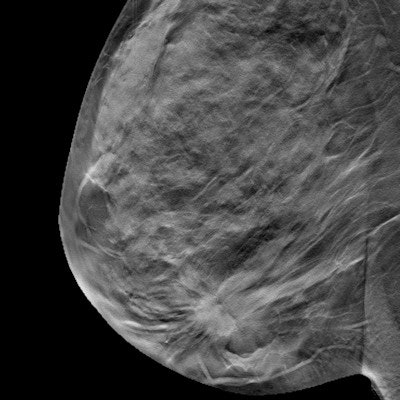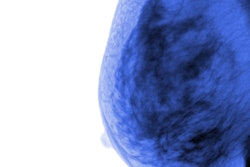
Breast density assessments rendered by radiologists from synthesized 2D digital breast tomosynthesis (DBT) exams are comparable to those rendered from standard 2D mammography images, according to a study published online June 12 in the Journal of the American College of Radiology.
The finding suggests that synthesized 2D images could replace standard 2D mammography, which is good news as more women seek additional imaging because they have dense breast tissue, wrote a team led by Dr. Irfanullah Haider of Brigham and Women's Hospital.
"Subjective breast density assessment by radiologists is similar for synthesized mammography and [standard mammography]," the group wrote. "This study contributes to emerging research supporting the replacement of [standard mammography] with synthesized mammography in an effort to reduce radiation dose and image acquisition time."
Over the past decade, many U.S. states have passed legislation mandating that women with dense breast tissue be notified of this fact and apprised of their options for further imaging. DBT is more effective for dense breast imaging, but unless synthesized 2D images are used, it imparts twice the radiation of digital mammography alone. In 2013, the U.S. Food and Drug Administration (FDA) made access to synthesized 2D mammography images more feasible when it cleared Hologic's C-View software, which creates 2D-like synthesized images from 3D DBT datasets.
Haider's team investigated whether there were perceptual differences in breast density classification among seven radiologists reading synthesized 2D images and standard ones. The study included 200 patients who underwent baseline screening mammography between June and November 2016; both standard and synthesized 2D images were obtained. The readers assessed the women's breast density, initially with the standard 2D images alone and then with the synthetic images alone in a second session. When the radiologists disagreed on a density category, they used a consensus process to come to an agreement.
The researchers found that most patients (87.5%) had the same BI-RADS density on synthesized 2D mammography as they did on standard mammography. The remaining 12.5% of cases that underwent a consensus process because reader density categories did not agree showed a slight trend toward higher density assignment on synthesized mammography, but this did not reach statistical significance.
Eight cases showed "clinically significant" density shifts (which the group defined as moving from nondense categories to dense categories or vice versa); four of these shifts were from synthesized to standard mammography and four were from standard to synthesized mammography.
The study demonstrates that synthesized 2D mammograms are comparable to standard 2D mammograms when it comes to reader assessment of breast tissue density -- and they can be safely incorporated into a radiology practice, the researchers concluded.
"This study provides evidence of the similarity of breast density assignment across seven readers on synthesized versus standard 2D digital mammograms," they wrote. "As technological advances have paved the way from analog screen films to digital mammography and now tomosynthesis, synthesized mammography provides a unique value proposition to evolve mammographic screening further."




















